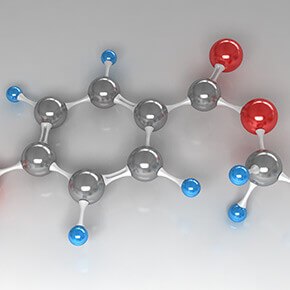Men Get Breast Cancer, Too
 While most women who’ve had breast cancer know that men get breast cancer, too (quite often because once they’ve been diagnosed and begin researching the disease, they discover the statistics) – many men have no idea they might be at risk.
While most women who’ve had breast cancer know that men get breast cancer, too (quite often because once they’ve been diagnosed and begin researching the disease, they discover the statistics) – many men have no idea they might be at risk.
Since male breast cancer accounts for less than 1% of all cases, it’s understandable that this health risk doesn’t make headlines, but every man (and the women in their lives) should definitely know both the risks and the indicators.
Although men at any age can develop breast cancer, it is most often detected when they are between 60 and 70. Until recently, women diagnosed with breast cancer have faced the stigma of having cancer in a body part that society feels uncomfortable discussing. For men, this societal stigma can be even more pronounced, since so many consider breast cancer a woman’s disease.
The American Cancer Society estimated that for breast cancer in men in the United States for 2014:
- About 2,360 new cases of invasive breast cancer will be diagnosed
- About 430 men will die from breast cancer
For men, the lifetime risk of being diagnosed with breast cancer is about 1 in 1,000 (as compared to 1 in 8 for their female counterparts).
What types of breast cancer affect men?
- Infiltrating ductal carcinoma: Cancer that has spread beyond the cells lining ducts in the breast. Most men with breast cancer have this type of cancer.
- Ductal carcinoma in situ: Abnormal cells that are found in the lining of a duct; also called intraductal carcinoma.
- Inflammatory breast cancer: A type of cancer in which the breast looks red and swollen and feels warm.
- Paget disease of the nipple: A tumor that has grown from ducts beneath the nipple onto the surface of the nipple.
It’s interesting to note that lobular carcinoma in situ (abnormal cells found in one of the lobes or sections of the breast), which sometimes occurs in women, has not been seen in men.
How can men recognize their risk factors?
Having a risk factor does not mean men will get cancer; but not having known risk factors doesn’t mean they are not at risk. It’s important for men to talk to their doctors, to determine whether or not breast cancer should be on their radar. Risk factors for breast cancer in men often include the following:
- Being exposed to radiation
- Having a disease linked to high levels of estrogen in the body, such as cirrhosis (liver disease) or Klinefelter syndrome (a genetic disorder)
- Having several female relatives who have had breast cancer, especially relatives who have an alteration of the BRCA2 gene
 We are all genetically programmed, which means our cells carry the hereditary information that is received from our parents. It is known that hereditary breast cancer only makes up about 5% to 10% of all breast cancer, but knowing if you have a genetic component is important. Men who have a mutated gene related to breast cancer have an increased risk of this disease, so they obviously need to take this into consideration.
We are all genetically programmed, which means our cells carry the hereditary information that is received from our parents. It is known that hereditary breast cancer only makes up about 5% to 10% of all breast cancer, but knowing if you have a genetic component is important. Men who have a mutated gene related to breast cancer have an increased risk of this disease, so they obviously need to take this into consideration.
How to recognize breast cancer in men
What are some of the signs men should pay attention to when it comes to breast cancer? Some of the most common include:
- A painless lump or thickening in the breast or chest area. Although any change in the breast or nipple can be a warning sign of breast cancer in men. These may include not only a lump, but a hard knot or thickening in the breast, chest or underarm area (usually painless, but may be tender)
- A change in the size or shape of the breast
- Dimpling, puckering or redness of the skin of the breast
- Itchy, scaly sore or rash on the nipple
- Pulling in of the nipple (inverted nipple) or other parts of the breast
- Nipple discharge (rare)
It is important to note that these symptoms may also be signs of a benign (non-cancerous) breast condition.
Since men tend to have much less breast tissue than women, some of these signs can be easier to recognize in men than in women.
When a man notices any of the previously mentioned signs, what’s next?
Although breast cancer in men is much less common than in women, if something that feels out of the ordinary has been discovered, the testing is very similar to what women experience:
- Physical exam and history: This includes an exam of the body to check general signs of health, including checking for signs of disease, such as lumps or anything else that seems unusual. A history of the patient’s health habits and past illnesses and treatments should also be taken.
- Clinical breast exam (CBE): A CBE is an exam of the breast by a doctor or other health professional. The doctor will carefully feel the breasts and under the arms for lumps or anything else that seems unusual.
- Ultrasound exam: This procedure uses high-energy sound waves (ultrasound) that are bounced off internal tissues or organs to make echoes. The echoes form a picture of body tissues called a sonogram.
- MRI (magnetic resonance imaging): This procedure uses a magnet, radio waves, and a computer to make a series of detailed pictures of areas inside the body.
- Blood chemistry studies: To determine blood chemistry, a blood sample is checked to measure the amounts of certain substances released into the blood by organs and tissues in the body. An unusual (higher or lower than normal) amount of a substance can be a sign of disease in the organ or tissue that makes it.
- Biopsy: When you undergo a biopsy, a sample of cells or tissues is taken so they can be viewed under a microscope by a pathologist to check for signs of cancer.
The following are different types of biopsies:
- Fine-needle aspiration (FNA) biopsy : The removal of tissue or fluid using a thin needle
- Core needle biopsy : The removal of tissue using a wide needle
- Excisional biopsy : The surgical removal of an entire lump of tissue
If cancer is found, additional tests will be done to study the cancer cells in order to determine what additional treatments are needed.
Survival for men with breast cancer is similar to survival for women with breast cancer
Although survival for men with breast cancer is similar to that for women cancer when their stage at diagnosis is the same, breast cancer in men is often diagnosed at a later stage. Unfortunately, cancer found at a later stage may be less likely to be curable.
Certain factors affect prognosis (chance of recovery) and treatment options:
- The stage of the cancer (whether it is in the breast only or has spread to other places in the body).
- The type of breast cancer.
- Estrogen-receptor and progesterone-receptor levels in the tumor tissue.
- Whether the cancer is also found in the other breast.
- The patient’s age and general health.
Because breast cancer in men is rare, there are few cases available to study. Most studies of men with breast cancer are very small, which means more study is needed.
Treatment for breast cancer in men
The treatments used to treat breast cancer in women are also routinely used when men have the disease:
Surgery and radiation therapy
The main treatment for breast cancer in men is surgery to remove the tumor. This is usually a mastectomy. Since men’s breasts are usually small, lumpectomy (also called breast conserving surgery) is rarely used. Some men may have radiation therapy following surgery, depending upon the stage of the breast cancer.
Hormone therapy
Most breast cancers in men are hormone receptor-positive. For men with hormone receptor-positive breast cancers, hormone therapy (with Tamoxifen) is usually the first drug therapy used.
Tamoxifen is taken in pill form, every day for at least five years. Men who complete the full course have higher survival rates.
Chemotherapy and targeted therapy
For men with hormone receptor-negative breast cancer, chemotherapy is usually the first drug therapy used.
For men with hormone receptor-positive breast cancer, chemotherapy may be given before Tamoxifen therapy, depending on the stage of his cancer.
Men with HER2/neu-positive breast cancers may be treated with Trastuzumab (Herceptin) plus a chemotherapy containing a Taxane.
Fox News reported on male breast cancer in October of 2014, sharing the stories of several men with various stages of the disease. The report details the personal side of diagnosis. We also recommend these additional links for further information about when men get breast cancer :
http://www.outoftheshadowofpink.com/
http://www.dailystrength.org/c/Male-Breast-Cancer/support-group
https://www.malebreastcancer.org/







